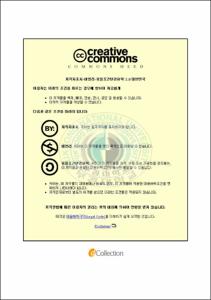영어 생물주어와 무생물주어의 한국어 번역유형 비교
- Alternative Title
- Korean Translation of Animate and Inanimate Subjects of English Transitives
- Abstract
- The purpose of this study is to compare how to translate animate and inanimate subjects of English transitives into Korean. I examine how English transitives change according to animacy and transitivity when Koreans translate them from English into Korean.
For this study, Reader's Digest's issues 80 through 85 as parallel studies were used. 52 sentences, which have inanimate subjects of English transitives, were examined. In addition, 52 sentences including animate subjects were extracted in order to make a comparison to the 52 sentences including inanimate subjects. Animate subjects of English transitives were selected from the script, which were originally founded from subjects of English transitives. The reason is to prevent alterative translation, according to the unique style of each translator.
Animate and inanimate subjects are divided into two groups; the first group includes subjects that translate into subjects. The second group includes subjects that translate into non-subjects. Two groups should classify animate subjects of English transitives the first group includes subjects that translate into subjects. The second group consists of when translators omit translation of subjects in the sentences. Four types divide inanimate subjects of English transitives; the type including natural things, the type revealing an institution, the type having a covert agent, and the type describing inanimate things.
Higher animacy of subjects and more accurate subjects translate into subjects, and transitive verbs translate into transitive verbs. On the other hand, in a case where subjects have lower animate subjects, they translate in two groups; one type includes transitive verbs that have the lower transitivity translate into transitive verbs. The other type includes transitive verbs that have the higher transitivity translate like this; any factor which is related to animacy in the sentence is translated into subject or transitive verbs is changed into intransitive verbs.
- Issued Date
- 2008
- Awarded Date
- 2008. 2
- Type
- Dissertation
- Publisher
- 부경대학교 대학원
- Alternative Author(s)
- Kim, Myung-Ae
- Affiliation
- 부경대학교 대학원
- Department
- 대학원 영어영문학과
- Advisor
- 김은일
- Table Of Contents
- Ⅰ. 서론 = 1
Ⅱ. 이론적 배경 및 방법론 = 3
2.1. 이론적 배경 = 3
2.1.1 유생성 = 3
2.1.2 타동성 = 5
2.2 방법론 = 10
Ⅲ. 생물주어 vs. 무생물주어 = 12
3.1 생물주어와 무생물주어 비교 = 12
3.2 생물주어 = 14
3.2.1 주어로 번역되는 유형 = 14
3.2.2 주어가 생략되어 번역되는 유형 = 15
3.3. 무생물주어 = 19
3.3.1. 주어가 자연 행위자인 유형 = 20
3.3.2. 주어에 숨은 사람 행위자가 암시되어 있는 유형 = 21
3.3.3. 주어가 기관을 나타내는 유형 = 22
3.3.4. 주어가 무생물인 유형 = 23
3.3.4.1 주어로 번역되는 유형 = 23
3.3.4.2 비주어로 번역되는 유형 = 27
Ⅳ. 결론 = 36
참고문헌 = 38
- Degree
- Master
- Files in This Item:
-
-
Download
 영어 생물주어와 무생물주어의 한국어 번역유형 비교.pdf
기타 데이터 / 566.2 kB / Adobe PDF
영어 생물주어와 무생물주어의 한국어 번역유형 비교.pdf
기타 데이터 / 566.2 kB / Adobe PDF
-
Items in Repository are protected by copyright, with all rights reserved, unless otherwise indicated.